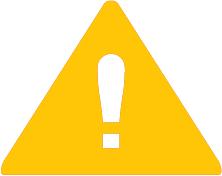The Pros and Cons of a Home Equity Loan
A home equity loan lets you convert a portion of your homeownership into cash. It can be a great way to borrow a large lump sum of money — however, if you default, you may face foreclosure on your home. Before reaching out to a lender, it’s important to fully understand the pros and cons of a home equity loan.
What is a home equity loan?
A home equity loan is a type of second mortgage. In a home equity loan, you can borrow a lump sum of cash that you typically repay in fixed installments over a term of five to 30 years. How much you can borrow will depend on how much of your home you own outright.
![]() Learn more about how much you could borrow using a home equity loan calculator.
Learn more about how much you could borrow using a home equity loan calculator.
Pros and cons of a home equity loan
Here are some pros and cons to consider before you start filling out loan paperwork.
Pros
You’ll pay a fixed interest rate. The interest rate you sign on for is the interest rate you’ll pay over the life of the loan. It won’t increase, even when the Federal Reserve raises interest rates.
You’ll have lower borrowing costs. Using real estate as collateral typically garners lower interest rates compared to other types of loans.
Your payments won’t change. Since you’re borrowing one lump sum and have a fixed interest rate, your payments are predictable and won’t vary over the life of the loan.
You can use the money for virtually any purpose. There’s no limit on how you use the cash from a home equity loan.
Your interest payments may be tax-deductible. If you choose to use your home equity loan proceeds to improve your home, you may be able to deduct the interest from your taxable income.
Cons
You could pay higher rates than you would for a HELOC. Because a home equity loan’s interest rate won’t fluctuate with the market, unlike a home equity line of credit (HELOC), the rate for a home equity loan is typically higher.
Your home is used as collateral. If you default on the payments, you could lose possession of your home through foreclosure.
You’ll pay closing costs. As with most loans involving real estate, you’ll most likely have to pay closing costs. These costs can range from 2% to 5% of the loan amount.
You’ll have two mortgage payments. If you still have a primary mortgage, you now have two mortgage payments, which can reduce your disposable income and make your monthly budget tighter.
You need to already have significant equity in your home. Many lenders require that you maintain a loan-to-value (LTV) ratio of 85% or lower, meaning you still have at least 15% equity in your home after borrowing a home equity loan.
You typically need to have a good credit score and low existing debt. Many lenders have strict home equity loan requirements, such as higher credit score minimums and less flexibility for higher debt-to-income (DTI) ratios.
Differences between HELOCs and home equity loans
Many things are set in stone with a home equity loan, such as your interest rate. In a HELOC, however, several factors can change over time. Here’s an in-depth guide on a home equity loan versus a home equity line of credit, and we highlight the differences below.
| Home equity loan | Home equity line of credit |
|---|---|
|
|
3 alternatives to a home equity loan
Cash-out refinance
A cash-out refinance can be a powerful financial tool, giving you access to the equity in your home without creating a second mortgage payment.
When you refinance into a cash-out loan, you borrow more than you need to mortgage the house and pocket the difference in cash. In an ideal situation, the refinance also allows you to get a lower interest rate. However, if you extend your loan term, you could pay more in interest over the life of the loan.
 CONVENTIONAL CASH-OUT REFINANCE RATE CHANGES FOR 2023
CONVENTIONAL CASH-OUT REFINANCE RATE CHANGES FOR 2023
Beginning May 1, 2023 conventional cash-out refinances are getting a little more expensive. Expect to potentially see higher interest rates or an extra fee at closing if you’re taking cash out and borrowing more than 30% of your home’s value. The fee will range from 0.375% to 5.125% of your loan amount, depending on your credit score and LTV.
HELOC
A home equity line of credit can be useful if you plan to have multiple large purchases over a period of several years. HELOCs have a set draw period, such as 10 years. During the draw period, you can borrow funds and your payments may only have to cover the interest owed. You aren’t able to borrow more from the credit line once the draw period is over, and you’ll then need to start making payments that cover both the principal and interest.
Unsecured personal loan
Personal loans provide a lump sum of cash that can be used for anything. You repay the loan over a set time period with a set interest rate. With a personal loan, you could borrow as little as a couple thousand dollars for two years, or as much as $100,000 for 12 years, depending on what you need and your credit history.
Because personal loans aren’t secured — they only rely on your credit — their interest rates tend to be higher than loans with collateral, such as a house or car. The average personal loan interest rate for borrowers with excellent credit scores (760-plus) is around 9%, according to LendingTree data.